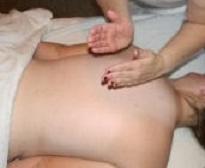Chinese Massage
where it is offered and what to expect!
Chinese Massage (or Tui Na) often incorporates many Asian massage techniques including acupressure, shiatsu, ashiatsu, and reflexology. It is task-focused and techniques are targeted toward healing and reducing pain.
Tui Na seeks to establish a more harmonious flow of Qi (or energy flow) throughout the body, allowing the body to heal itself.
What to Expect
Acupressure techniques, herbal therapies, compresses, and salves are sometimes used to establish the proper energy flow.
In the typical session, the client wears clothing but no shoes, lies on the floor or a low table, and massage techniques will focus on specific musculoskeletal or stress-related problems rather than the entire body.
Cost
The average price for a session is $45-$85, depending on where you are located and the experience level of the therapist.
Learning the techniques
In most areas of China, Tui Na is taught as a separate field of study in many Chinese medical schools. Therefore, it is a much more detailed treatment than most.
In the U.S., traditional Chinese techniques are often taught specifically in a Chinese massage school, focused on teaching traditional therapies. The Pacific College of Oriental Medicine is one of those schools.
You will be taught about pressure points throughout the body that can be massaged to alleviate pain in or around the hurting muscle(s). Each pressure point, when massaged, is believed to release built-up tensions, encourage normal body function and reduce chances of illness and disease.
For example, the "Bladder 7" point is believed to be the pressure point for sinuses, and massage of this point treats sinus congestion, headaches, and allergies. Bladder 7 can be found if you start in the center of the eyebrow. This is an acupressure point that is often tender. Now, gently move you thumb backwards toward where the hair line starts. Then, move 2-3 inches further down the scalp. Bladder 7 is around the vertex of the head.
Acupressure points such as this, are triggered by locating and applying pressure to the point, then adding light massage to release restrictions.
In order to receive the best benefits of the massage, the pressure point should be worked for at least 30 seconds to one minute. After the point is worked, pressure should be reduced and tips of thumbs/fingers should massage the pressure point in a counter clockwise position for one minute.
There are many pressure points throughout the human body. This is just one example of learning what pressure points are in Chinese bodywork, how to stimulate and massage them, and how to help alleviate pain and illness.
Tui na: A Manual of Chinese Massage Therapy is a detailed manual for therapists interested in practicing Tui Na. It explains the Tui na traditions, how massage techniques work with Chinese medicine and how to become a Tui na practitioner.
It provides details of Tui Na techniques, how to apply them, and their therapeutic benefits. Routines are given to assist with the learning of skills and to give for building of treatment plans.
The author, Sarah Pritchard, discusses the principles and practice of Tui Na which allows the therapist to make their own choices and formulate treatments by incorporating knowledge and skills.

New! Comments
Have your say about what you just read! Leave me a comment in the box below.